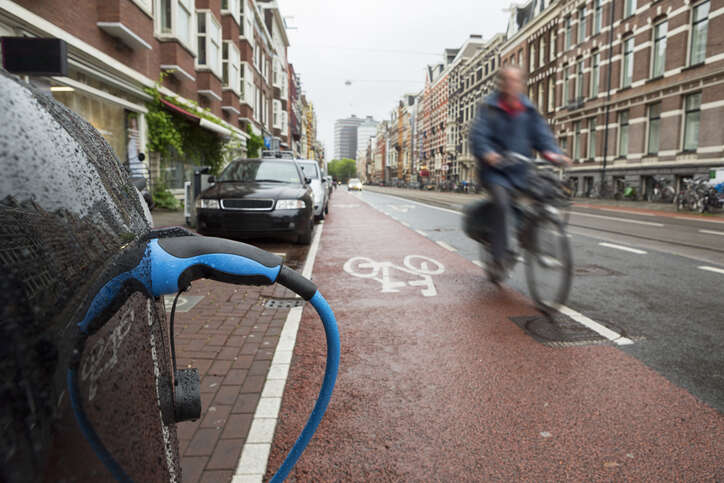
Electric vehicles (EVs) are becoming popular as a way to save money in the long run, as they help drivers avoid rising fuel costs during a cost-of-living crisis. This is especially true for anyone who has a renewable energy generation system at home.

But their benefits will change depending on where you primarily drive your EV. How do they affect people living in a traffic-heavy city environment, for example?
More efficient on shorter journeys
Most people who live in cities will do shorter journeys than those living more rurally, purely because in rural areas, homes and amenities tend to be more spread out. These quick trips can be highly inefficient in a traditional internal combustion engine (ICE), as they lose around 60% of their efficiency on heat and friction.
In comparison, quickly popping in your EV doesn’t have the same issue, making them arguably a winner when it comes to city efficiency.
Electric vehicles are a quiet option
All those engines rumbling in traffic can make for a noisy environment to live and work in. The almost silent approach of an EV engine can help tackle the issue of noise pollution, which can cause hearing loss, high blood pressure, disturbed sleep and stress.
However, cities are also full of people rushing and stepping off pavements into the road, and the quiet EV can be easy to miss if you don’t look before you cross. This doesn’t mean that EVs are a bad option, but it does mean that drivers and pedestrians will need to be more vigilant.
Helping with cleaner air
The main benefit of an EV is that they have zero tailpipe emissions. This means that there are no harmful greenhouse gases being emitted as you drive. Not only is this better when it comes to tackling climate change, but it also creates a healthier environment to live in.
[Read more: Are e-scooters the future of city travel?]
Cities are notorious for their traffic jams, and so reducing the number of poisonous emissions generated while you queue is a significant benefit.
The EV charging problem
One of the biggest concerns for those looking to make the switch to electric is range anxiety – the worry that you’ll run out of charge and not be able to find a charging station. EVs typically have a shorter range than petrol or diesel vehicles, and there are fewer charging stations than petrol stations available.
But this is less of an issue for city dwellers who do most of their driving on short trips within the city limits. In fact, EVs are often seen as being more suitable for people who live in cities than those who live in rural areas for this reason.
However, this attitude does rely on EV owners either being able to access a charging station at home, or easily finding an on-street one when they need it. Unfortunately, this is often not the case, with many people living in flats, or homes without driveways.
Lack of home renewable energy
While there’s no doubt that EVs are the greener choice when it comes to tailpipe emissions, many people are concerned about the eco credentials of powering their cars with electricity generated by fossil fuels.
While those living out of the city limits might be able to have solar panels or home wind turbines to generate their own renewable energy, which combats this issue, those in cities are less likely to have the space to do this. However, there is a middle ground – committing to buying your electricity from a renewable energy provider, or switching to a green tariff can help increase the number of green units in the grid mix.
Are EV charging stations accessible?
Another issue for those without home charging points is that public stations may not be accessible to those with disabilities. Especially for on-road points, it can be difficult to navigate mobility aids around tightly parked cars, or even be able to get the charging point to the right height to use it. Shockingly, this guide to electric vehicles and accessibility reports that there is just one charging station that is fully accessible in the UK, which just goes to show how far we have to go.
Overall, electric vehicles have a lot to offer city dwellers, and it is not surprising that they are becoming increasingly popular in urban areas. However, there are still several issues to overcome, especially around charging stations and accessibility, before EVs can become the universal city car of choice.
[Read more: The data behind the electric car market’s explosive growth]






